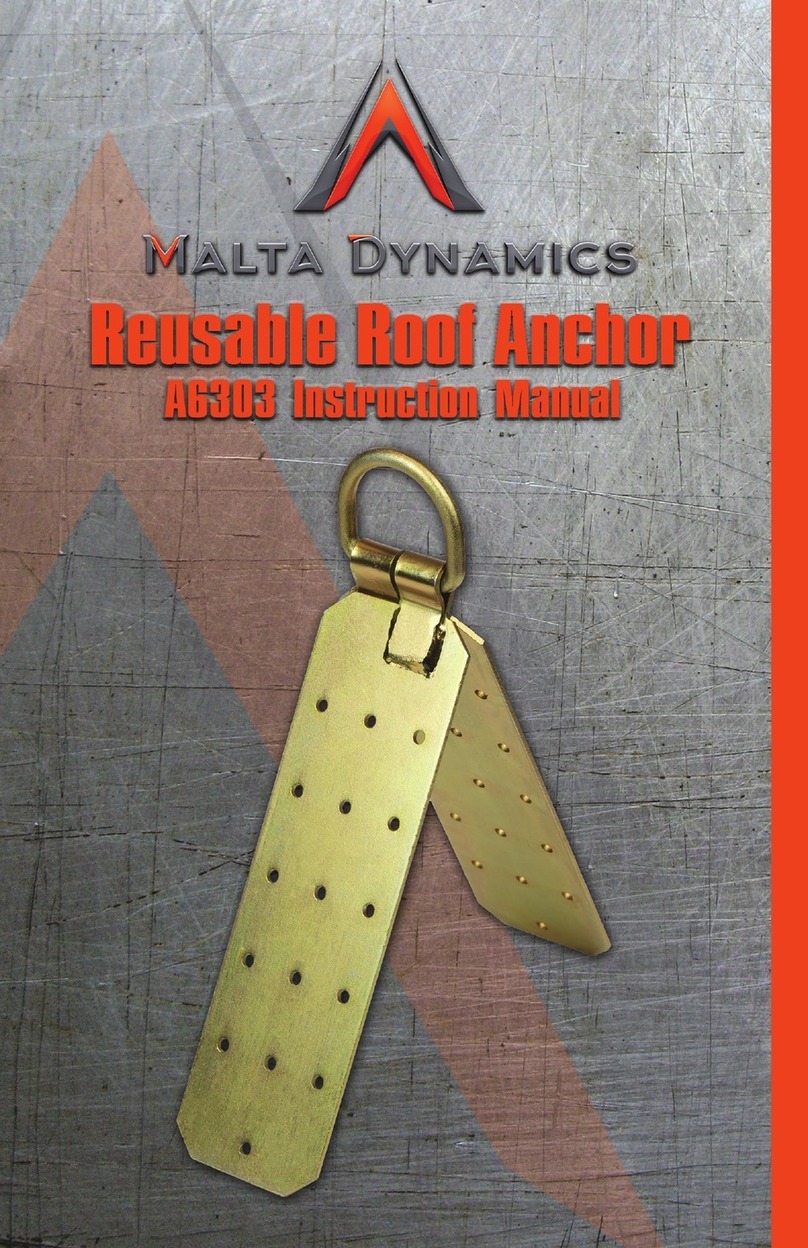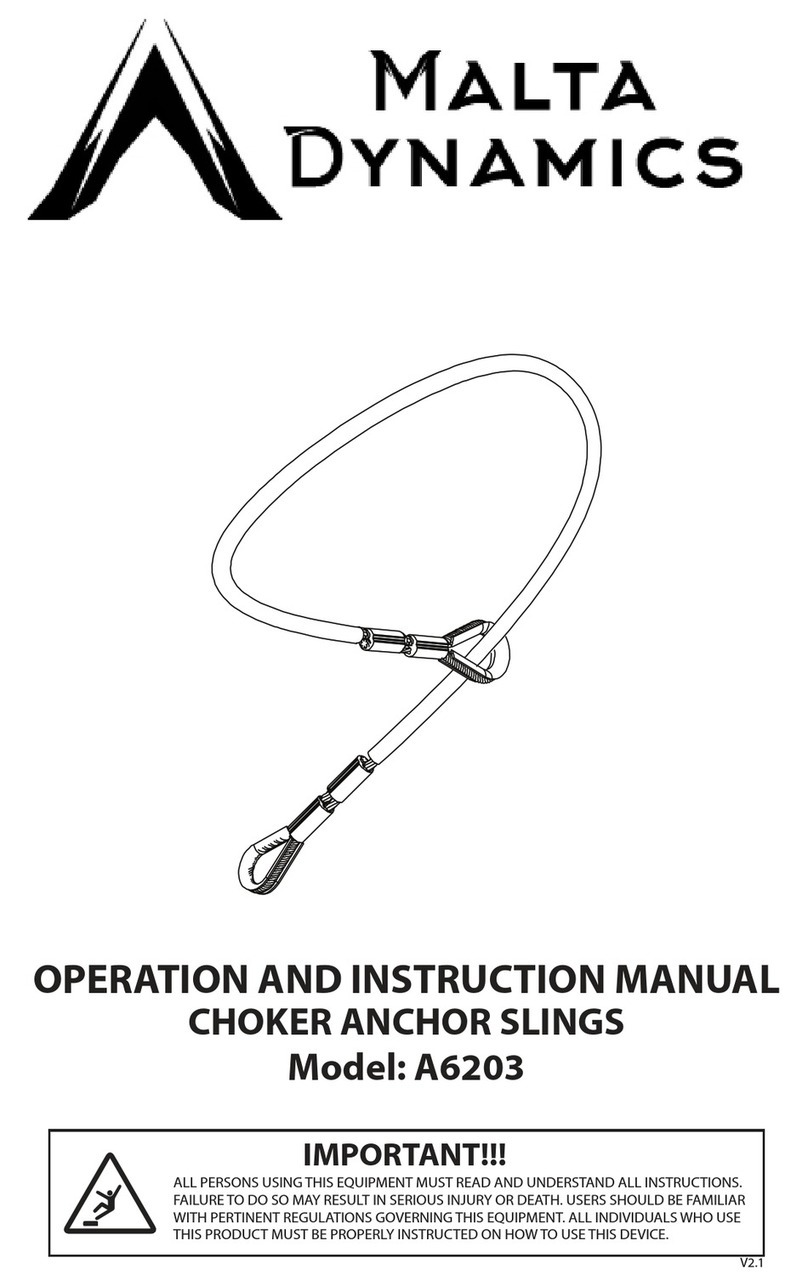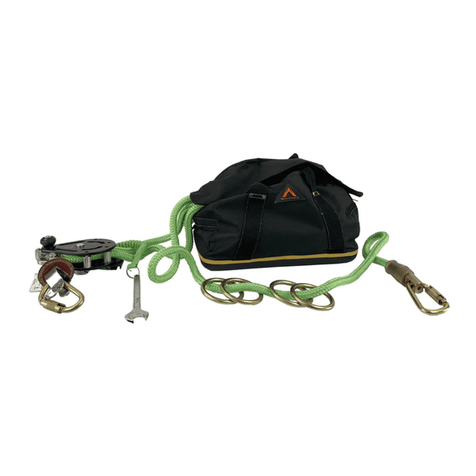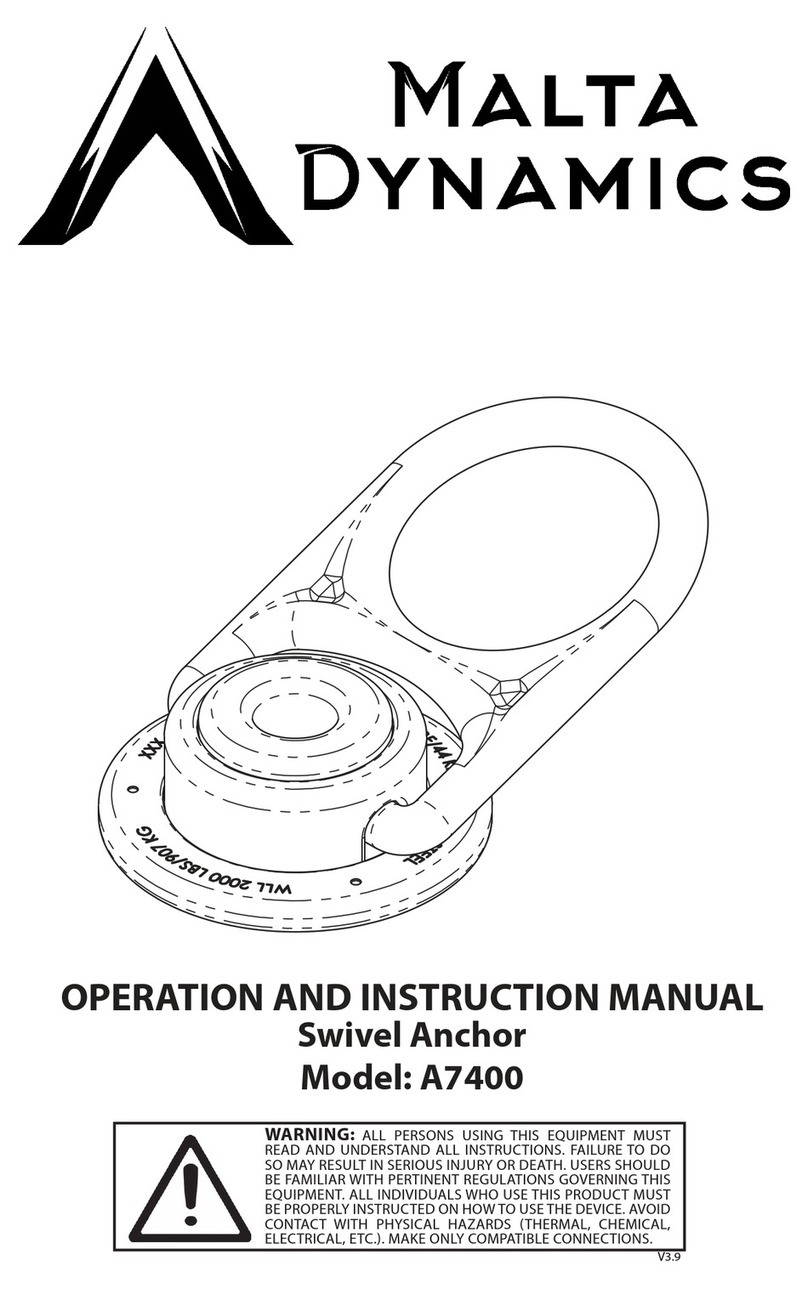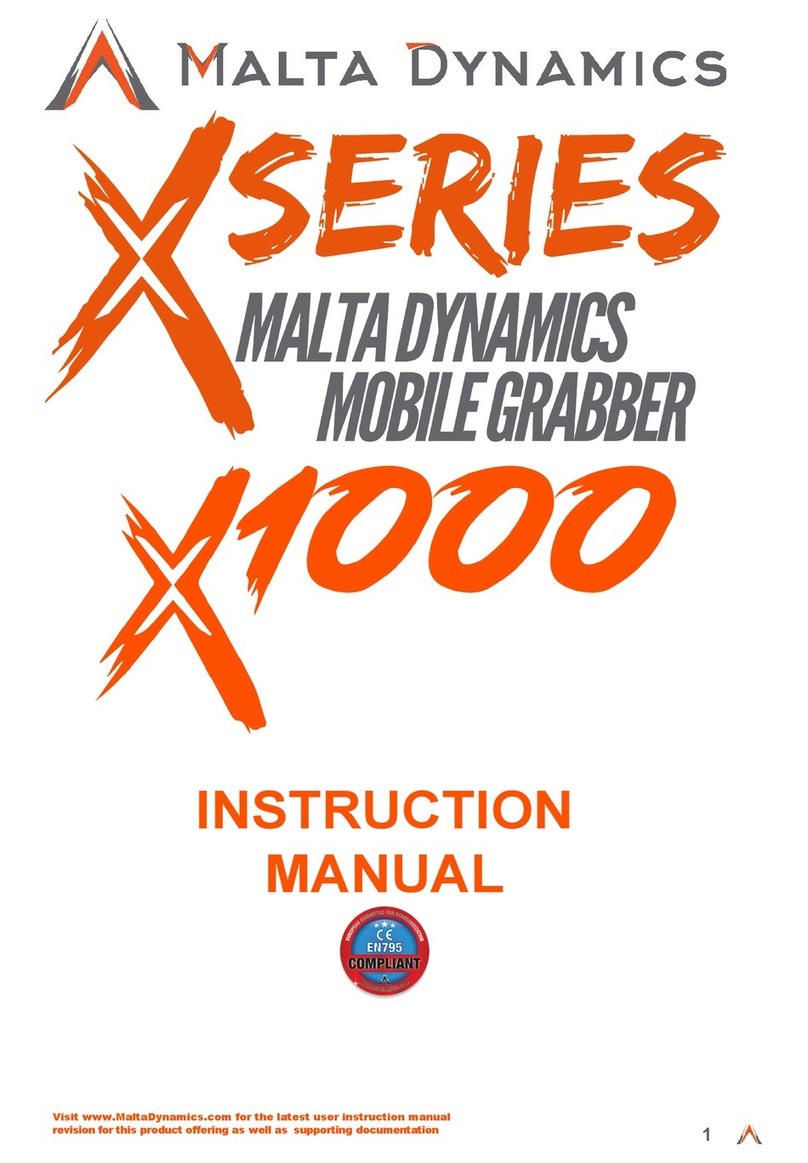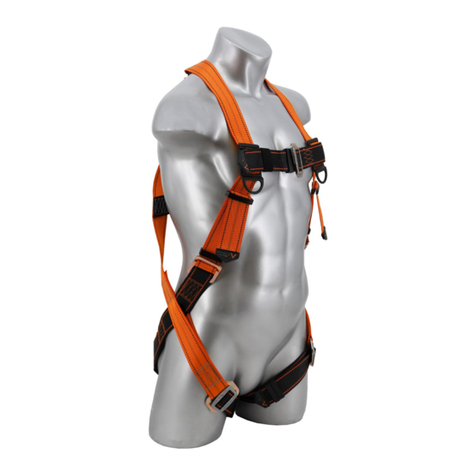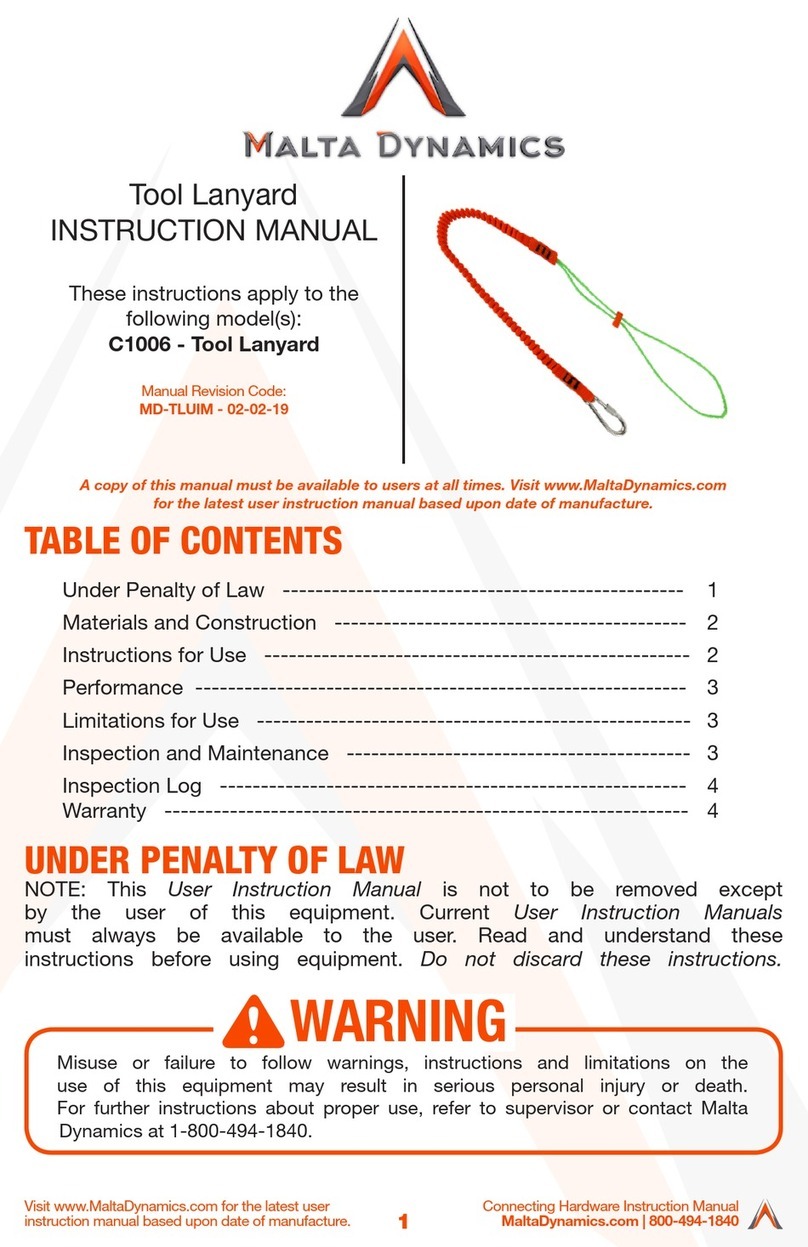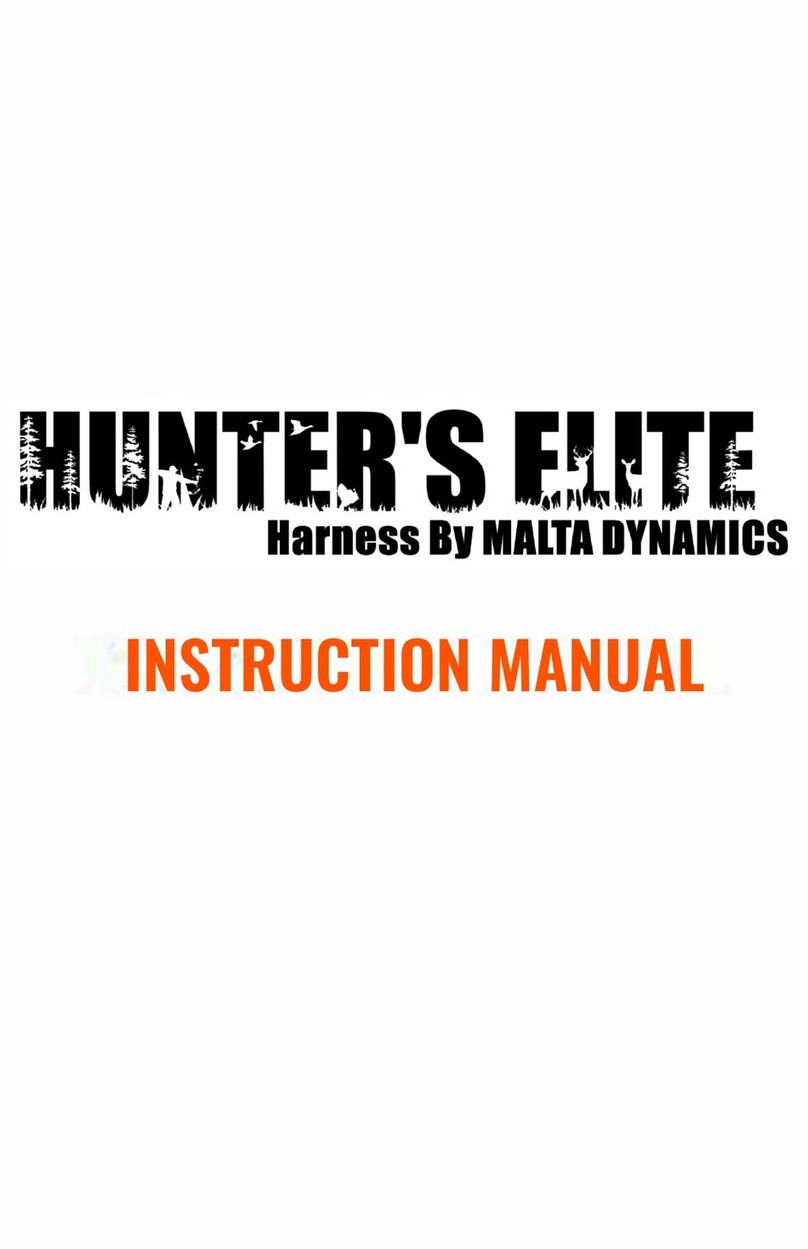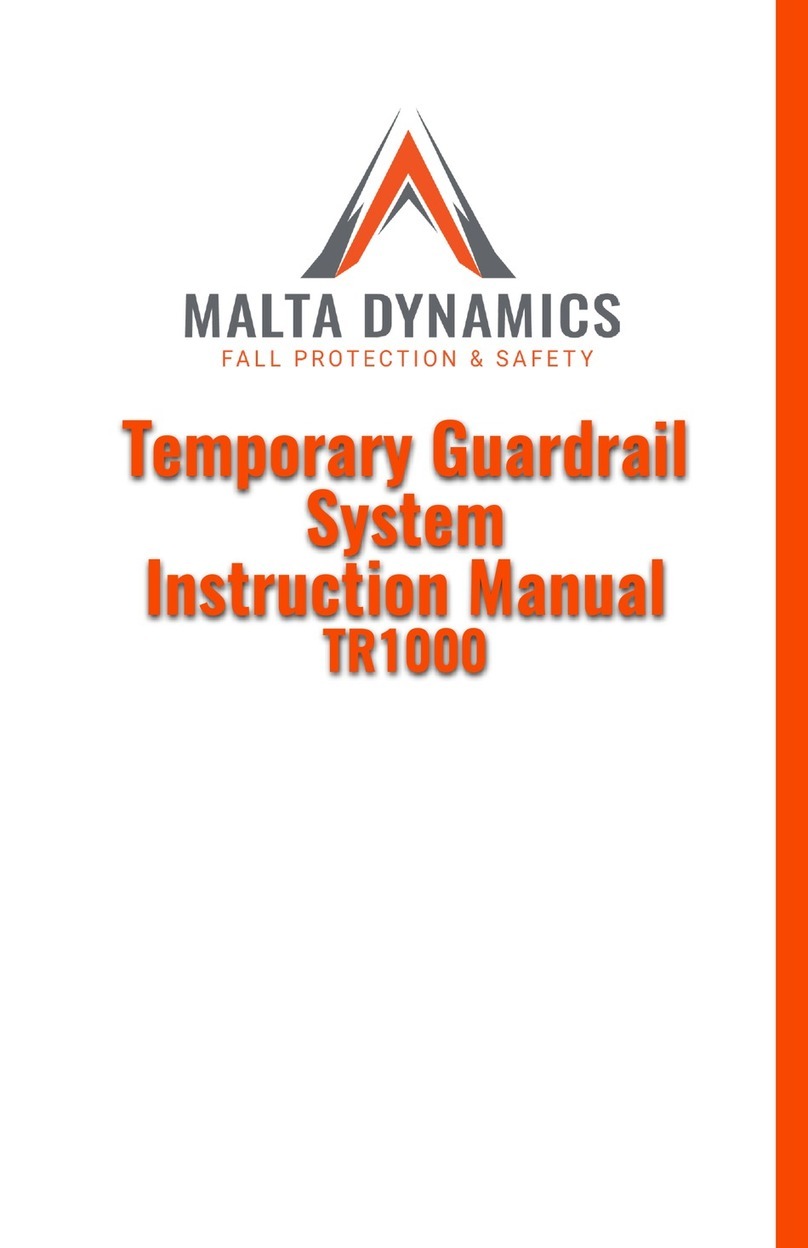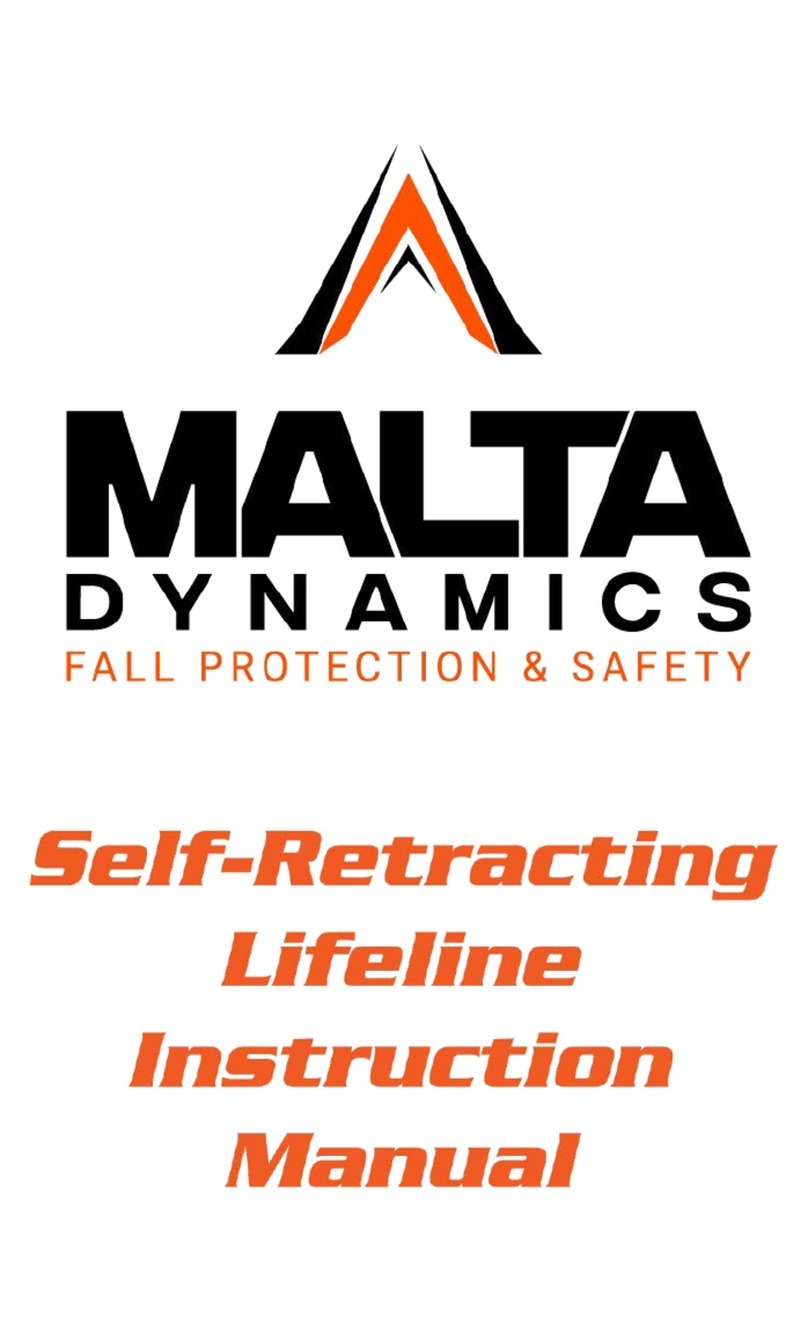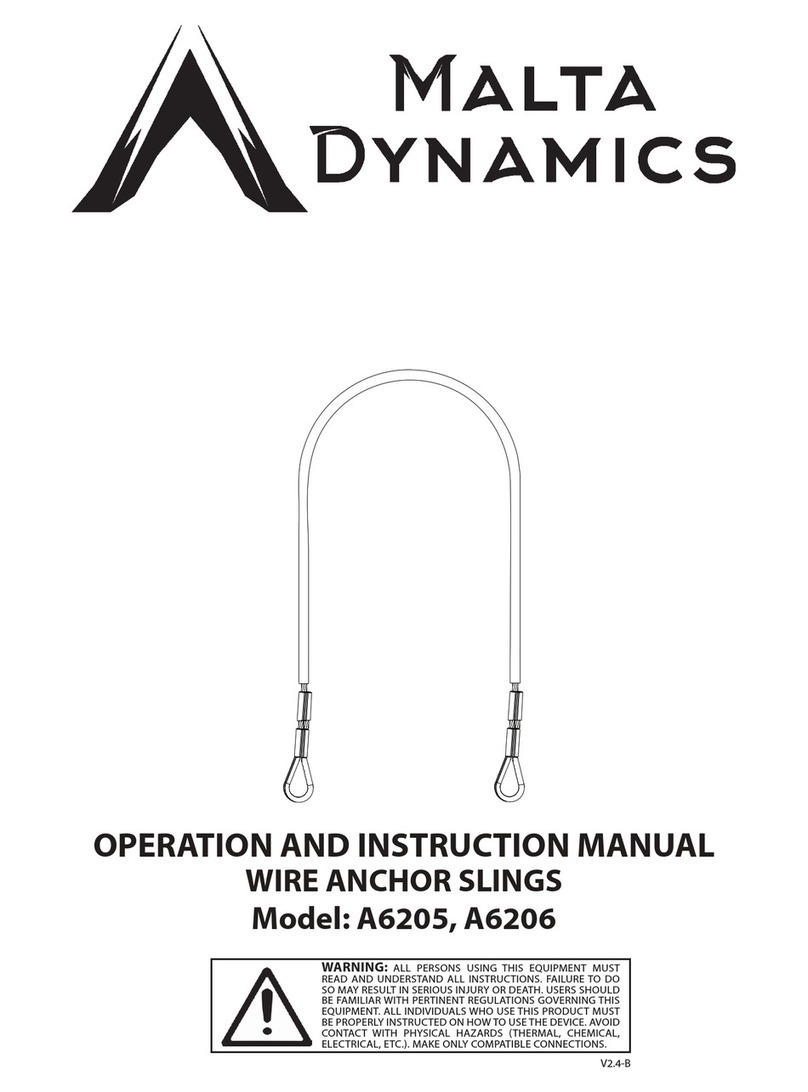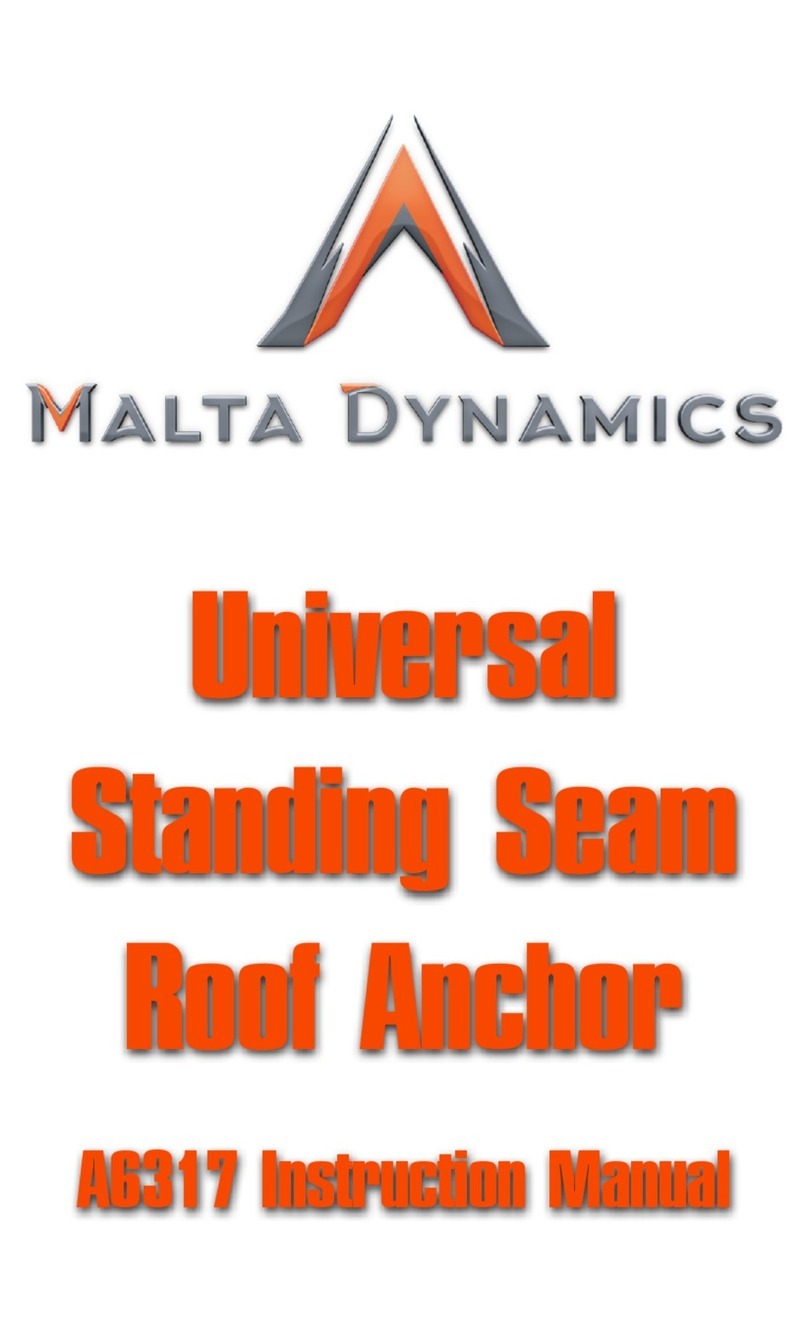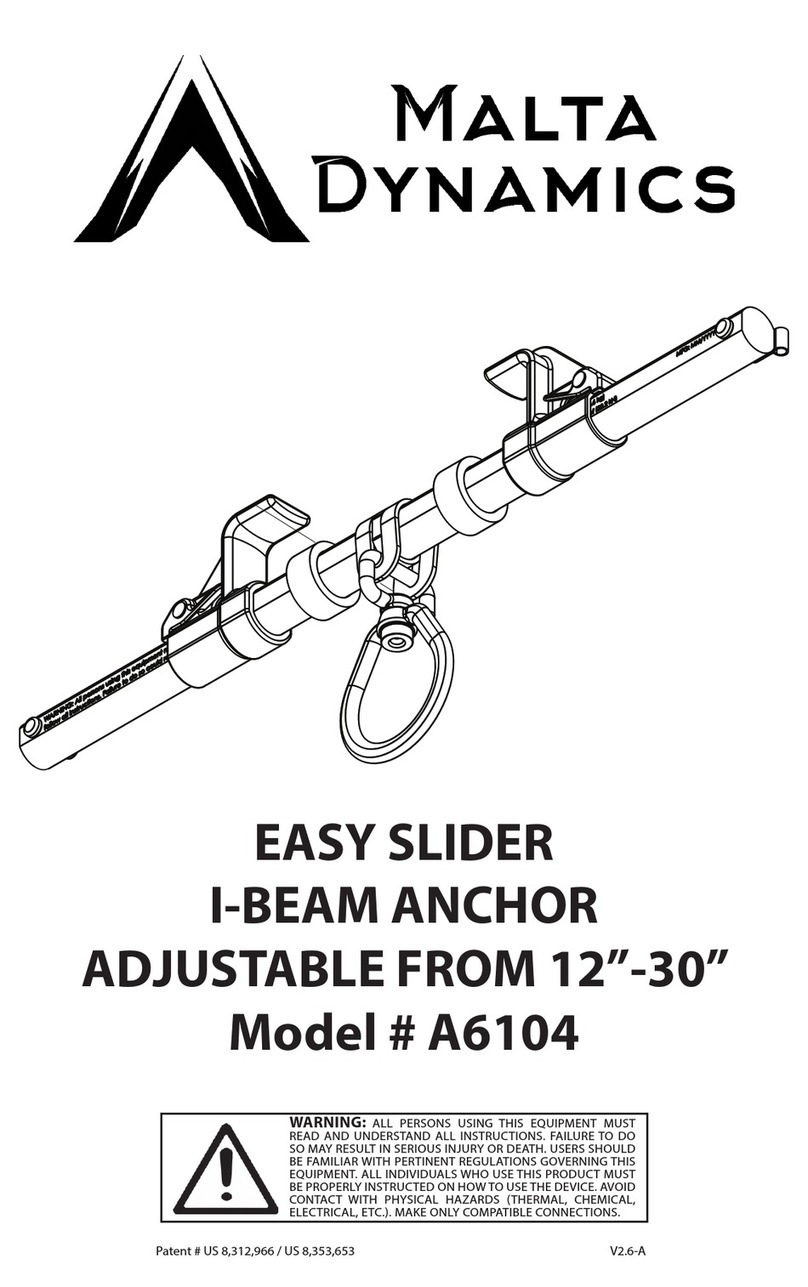
Lanyards Instruction Manual
MaltaDynamics.com | 800-494-1840 6Manual Revision Code:
MD-LUIM160805
• Always attach an unused lanyard to a lanyard storage keeper when not
in use.
• Never attach the unused leg of the lanyard to the harness at any other
location.
• The regulations included herein are for reference only. They are not all-
inclusive and not intended to replace a Competent Person’s judgment
or knowledge of federal or state standards.
• The analysis of the workplace must anticipate where workers will be
performing tasks, the routes they will take to reach their tasks, and the
potential/existing exposure to fall hazards.
• A Competent Person must choose fall protection equipment. Selections
must account for all potential hazardous workplace conditions.
• All fall protection equipment should be purchased in a new and unused
condition.
• Select and install fall protection systems under the supervision of a
Competent Person. Fall protection systems must be used in a compliant
manner.
• Fall protection systems must be designed in compliance with all federal,
state, and local safety regulations.
• A Competent Person must calculate forces applied to anchors.
• Harnesses and connectors selected must be compliant with
manufacturer’s instructions and must be of compatible size and
conguration.
• A pre-planned rescue procedure is required as part of a complete fall
protection program. The rescue plan must be project specic. The
rescue plan must either allow for employees to rescue themselves or
provide an alternative means for their prompt rescue. Store rescue
equipment in an easily accessible and clearly marked area.
• A Competent Person must train Authorized Persons to correctly erect,
disassemble, inspect, maintain, store, and use equipment. Training
must include the correct use of personal fall arrest systems, the ability
to recognize fall hazards, and how to reduce the dangers of fall hazards.
• NEVER use any fall protection equipment to hang, lift, support, or hoist
tools or equipment unless that equipment is explicitly certied for such
use.
• A Competent Person must inspect equipment at least every six months.
These inspections must be documented in equipment instruction
manual and on equipment inspection grid label.
• Equipment must be inspected for defects including (but not limited to):
the absence of required labels or markings, improper form/t/function,
evidence of cracks, sharp edges, deformation, corrosion, excessive
heating, alteration, excessive wear, fraying, knotting, abrasion, and
absence of parts. Equipment that fails inspection in any way must
immediately be removed from use or repaired by an entity approved by
Malta Dynamics.
